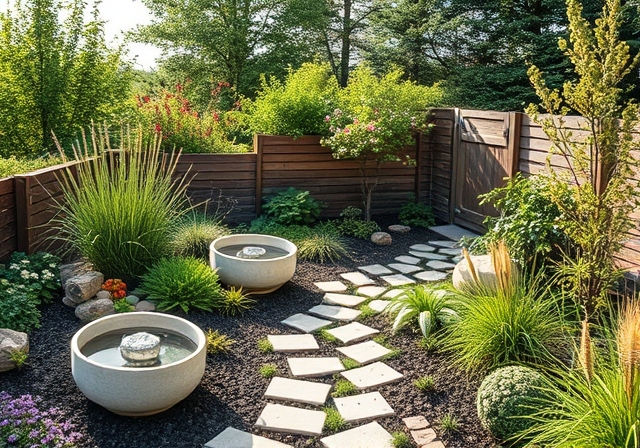The Growing Importance of Sustainable Landscaping
As awareness about environmental issues continues to rise, sustainable landscaping is becoming an essential choice for homeowners and businesses. Clark Outdoor Designs stands at the forefront of this movement, providing innovative and eco-friendly landscaping solutions that enhance outdoor beauty while prioritizing ecological health. This article delves into the significance of sustainable landscaping and showcases how Clark Outdoor Designs can help you craft a stunning, environmentally responsible outdoor space.
Why Choose Sustainable Landscaping?
Sustainable landscaping extends beyond traditional gardening by integrating practices that conserve resources, minimize waste, and reduce reliance on harmful chemicals. It aims to create outdoor environments that are not only aesthetically pleasing but also environmentally responsible. Here’s why sustainable landscaping is vital:
Conserving Water Resources
Implementing sustainable landscaping techniques—like xeriscaping and selecting native plants—can significantly reduce water consumption. This conservation of one of our planet’s most precious resources is crucial, especially in regions facing water shortages.
Reducing Environmental Pollution
Sustainable landscaping minimizes the use of chemical fertilizers and pesticides, which can lead to pollution of local water systems and soil. By employing organic practices, we protect the environment while promoting healthier ecosystems.
Supporting Biodiversity
Native plants and sustainable practices help create habitats for local wildlife, enhancing biodiversity. This contributes to the restoration of natural ecosystems and fosters a balanced environment.
Lowering Long-term Maintenance Costs
Sustainable landscapes often require less upkeep. By selecting plants that thrive in local conditions and implementing efficient watering practices, homeowners can save on maintenance costs, such as frequent watering, mowing, and fertilizing.
Increasing Property Value
A well-designed sustainable landscape not only enhances the visual appeal of a property but also increases its market value. Environmentally-conscious buyers are often drawn to homes with sustainable landscaping features.
Essential Components of Sustainable Landscaping
At Clark Outdoor Designs, a range of sustainable practices and materials are employed to create eco-friendly landscapes that marry beauty with functionality. Here are some core elements that can be integrated into your sustainable landscaping project:
Native Plant Selection
Using native plants is fundamental to sustainable landscaping. These plants are naturally suited to local climates and soil, requiring less water and fewer chemicals. They also provide essential habitats for local wildlife, fostering biodiversity.
Xeriscaping Techniques
Xeriscaping emphasizes water conservation by using drought-tolerant plants and efficient watering systems. This landscaping method significantly reduces or eliminates the need for irrigation, promoting a vibrant yet water-efficient landscape.
Organic Lawn Care Practices
Traditional lawn care often involves synthetic fertilizers and pesticides, which can be harmful to the environment. Clark Outdoor Designs offers organic lawn care options that utilize natural fertilizers, compost, and integrated pest management, ensuring a healthy lawn without toxic chemicals.
Permeable Paving Solutions
Permeable paving materials—like gravel and permeable concrete—allow water to seep through the surface, reducing runoff and erosion. This technique recharges groundwater and diminishes flood risk.
Rain Gardens and Bioswales
Rain gardens and bioswales are designed to capture and filter stormwater runoff, minimizing its impact on local waterways. Utilizing plants and soil, these features naturally filter pollutants from rainwater, helping to safeguard the environment.
Composting and Mulching Techniques
Composting organic waste and applying mulch to garden beds are effective strategies for enhancing soil health and minimizing waste. Mulch retains soil moisture, suppresses weeds, and enriches the soil as it decomposes.
Efficient Irrigation Systems
Smart irrigation systems equipped with sensors and timers can drastically reduce water waste. These systems deliver water directly to plant roots at optimal times, ensuring a healthy landscape while conserving water.
Real-Life Examples of Sustainable Landscaping Success
Clark Outdoor Designs has successfully implemented sustainable landscaping solutions for many clients, showcasing the beauty and efficacy of these practices. One notable project in Frisco transformed a conventional lawn into a native plant garden featuring permeable pathways and a rain garden. This initiative reduced water consumption by 50% while attracting local wildlife, creating a vibrant eco-friendly oasis.
In another project in The Colony, a high-maintenance lawn was replaced with drought-tolerant plants and a drip irrigation system. The outcome was a visually appealing, low-maintenance landscape that required minimal water and care, enhancing the property’s curb appeal.
Begin Your Journey to a Sustainable Landscape
Creating a sustainable landscape doesn’t mean compromising on beauty or functionality. With the right design and materials, you can enjoy an outdoor space that is both stunning and environmentally friendly. Clark Outdoor Designs is dedicated to helping you find this balance, offering tailored solutions to meet your unique needs and environmental objectives.
Frequently Asked Questions About Sustainable Landscaping
What are the advantages of using native plants?
Native plants are well-suited to local environments, requiring less water and fewer fertilizers and pesticides. They also support local wildlife and help maintain natural ecosystems.
How can I improve the sustainability of my current landscape?
Making simple changes—such as adding native plants, creating a rain garden, using organic fertilizers, and upgrading to a smart irrigation system—can significantly enhance the sustainability of your landscape.
Is xeriscaping suitable for all climates?
Xeriscaping focuses on water conservation using drought-tolerant plants and efficient irrigation techniques. While it’s especially beneficial in arid regions, its principles can be adapted to various climates.
How does permeable paving benefit the environment?
Permeable paving materials allow water to filter through, reducing runoff, preventing erosion, and recharging groundwater supplies.
Is sustainable landscaping more expensive than traditional landscaping?
While some sustainable practices may involve higher initial costs, they often lead to lower maintenance and water expenses over time, making them a more cost-effective choice in the long run.
Christmas stickers for Cricut
father’s day gifts made with cricut
cricut inspirational quotes
cricut black friday sale
Valentine’s Day Cricut stickers
cricut animal designs




